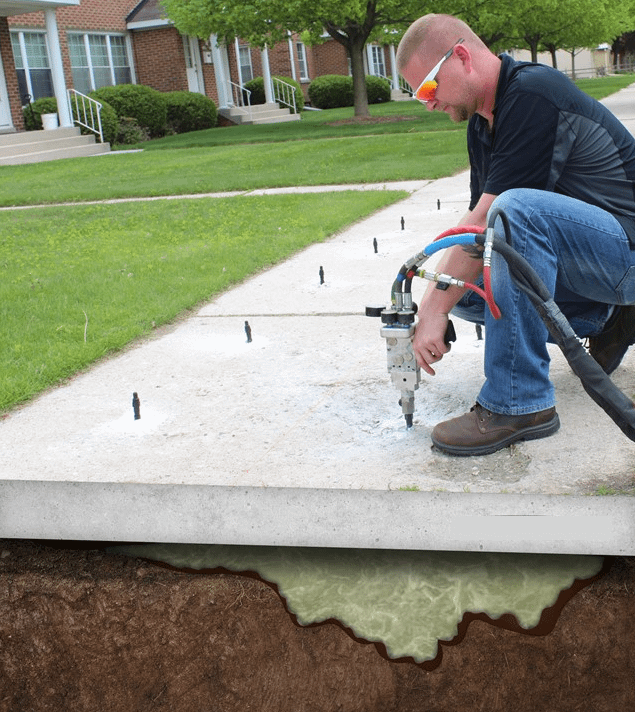The Single Strategy To Use For Best Basement Waterproofing
Table of ContentsBest Basement Waterproofing Can Be Fun For AnyoneBest Basement Waterproofing for DummiesBest Basement Waterproofing - The FactsNot known Details About Best Basement Waterproofing Things about Best Basement Waterproofing
AdvantaClean's qualified experts and technicians will find the water source. If wall or slab cracks are present, we will infuse polyurethane and epoxies right into the cracks and seal the compromise, stopping more wetness from getting in.If there's condensation on the outside of the aluminum foil, you have high moisture in your basement. Repair it with a portable space dehumidifier or a whole-house humidifier system as opposed to waterproofing items. If the aluminum foil has condensation on the inside surface (following to the wall), the soil around your home may be normally damp from a high water table or inadequate dirt drain.
You can waterproof simply your interior wall surfaces, which might resolve the problem. Once they dry out, they stick permanently to concrete and stonework walls.
Best Basement Waterproofing Fundamentals Explained
Concrete water resistant coatings can't be used to previously repainted surface areas; inspect the label. Known as densifiers, they are suitable only for walls that haven't been painted or sealed.
But you clean, roll, or spray it on a lot more heavily one gallon covers simply 75 square feet, not the 300 square feet typical with basic paint. Waterproof paint is great for do it yourself application. You can apply it over painted surface areas, and paint over it once it's cured (one gallon costs $37).
It can set you back $10,000 to $15,000, depending on the job needed. Outside waterproofing entails excavating all around your home fully deepness of the foundation walls, then setting up a water resistant covering or membrane covered by water drainage panels. The panels provide an easy path for water to stream down to an exterior French drainpipe at the end of your foundation.
A cellar without waterproofing is kind of like that. Your cellar doesn't want to go via a downpour without proper security just as much as you do not want to.
The Greatest Guide To Best Basement Waterproofing
However if you've done your research, you 'd recognize there are 2 kinds of waterproofing: exterior and interior. It can get perplexing what they both mean, which one's a much better financial investment, and what will in fact maintain the water out. Do not fret, we created this blog to conveniently define both approaches for you and talk about the advantages and disadvantages of each.
Outside waterproofing is a waterproofing method that entails sealing your home from the outside. It's sort of like a moat around a castle. It includes excavating a trench around your entire residence down to the structure (regarding 8 to 10 feet down). The foundation wall surfaces are after that cleansed, secured, and covered with a water-proof membrane layer or sealer.

The 9-Minute Rule for Best Basement Waterproofing
It's an extra involved process that calls for digging up your backyard, which is expensive and taxing. Outside waterproofing entails eliminating whatever surrounding your house, including verandas, driveways, sidewalks, landscape design, a/c systems, decks, and so on. If any check here one of the work was done inaccurately and water is still entering your cellar, there isn't much you can do to deal with or fix it.
Inside cellar waterproofing includes waterproofing from the inside. Any kind of water that leaks right into your basement is redirected prior to it touches your floor. It's type of like wearing a raincoat under your clothing. It includes 2 points: a water drain track and a sump pump. It functions by securing the within of your basement walls and floors so water that attempts to go into is directed out through a sump pump.
It's an efficient approach to water-proof your basement. The drawback of interior basement waterproofing mostly has to do with the installment procedure.
The 7-Minute Rule for Best Basement Waterproofing
To conclude, exterior and interior cellar waterproofing are both effective approaches of protecting your home from water damage. Exterior waterproofing creates an obstacle that prevents water from entering your home, while indoor waterproofing reroutes water that does enter your home. And it is very important to note that outside waterproofing is a costly and turbulent setup procedure when compared to indoor waterproofing.
Whichever approach you choose, find more info make sure you select a trustworthy and credible contractor for the work. Both approaches need knowledgeable employees to manage the task. If you have any type of questions about basement waterproofing, please reach out to us. And if you're in our service area and have water in your basement, call us for a complimentary, no-obligation home assessment.
You can complete our type here, start a chat in the lower right-hand edge, or call us at 1-800-827-0702.